How can you keep sports injuries at bay and ensure a quick recovery when they do happen? This article serves as your concise roadmap for preventing and treating sports injuries, highlighting effective practices, critical first aid, and advanced care techniques. Expect to gain actionable insights that will help you maintain your athletic performance and recover efficiently from common injuries.
Key Takeaways
- Sports injuries can range from minor strains and sprains to serious fractures and dislocations, with overuse injuries also posing significant risks to athletes.
- Effective prevention strategies for sports injuries include practicing proper techniques, using appropriate equipment, and maintaining a comprehensive training and conditioning regimen.
- The RICE method, over-the-counter medications, and knowing when to seek medical attention are essential for the immediate and effective treatment of minor injuries.
Understanding Common Sports Injuries
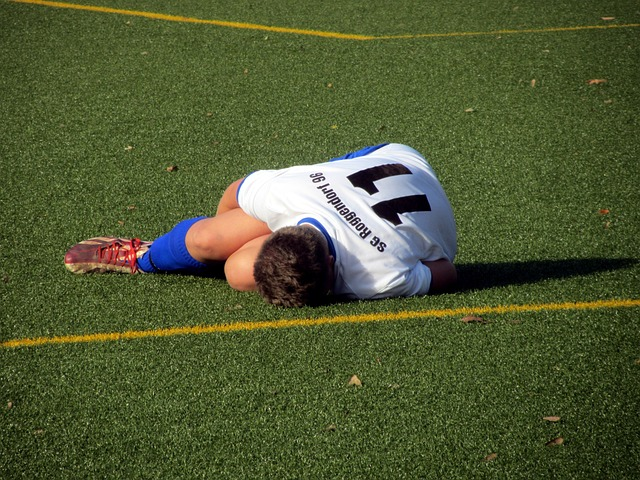
When the topic of sports injuries arises, what images flash through your mind? Perhaps a basketball player clutching a twisted knee, or a soccer star limping off the field? The truth is, that many sports injuries encompass a broad spectrum of conditions that can affect any athlete, regardless of their sport or level of expertise. They range from minor annoyances to serious ailments that can sideline athletes for weeks, or months, or even end careers if not addressed properly. Some of the most common sports injuries include:
- Sprained ankles
- Pulled muscles
- Torn ligaments
- Fractured bones
- Concussions
Athletes need to take proper precautions and seek medical attention when necessary to prevent and treat exercise common sports injuries.
Sports injuries can come in various forms, such as:
- Ligament sprains
- Muscle strains
- Bone fractures
- Dislocations
For our younger athletes, sprains and strains are particularly common and can result from the high energy and enthusiasm they bring to each game or practice. Understanding these injuries is the first step toward effective treatment and prevention, setting the stage for a deeper exploration of each type.
Strains and Sprains
Strains and sprains are the unwelcome twins of the sports injury world, often occurring when athletes least expect them. Strain joint injuries involve an injury to a muscle or tendon, those fibrous cords that attach muscles to bones, and can sometimes be caused by muscle tension. Sprains, on the other hand, involve ligaments, which connect bones to other bones at the joints. The pain of a strain might strike when you push your body beyond its limits or fail to warm up properly, while a sprain might occur during a sudden twist or fall, especially in contact sports.
The symptoms of these injuries are not subtle and include:
- Severe pain
- Swelling
- Bruising
- Inability to use the joint
These are telltale signs that something is amiss. A sprained ankle might result from an awkward landing after a basketball rebound, while a strained hamstring could happen during a sprint to first base in baseball. Regardless of the cause, these common sports injuries demand prompt attention to ensure a swift and comprehensive recovery.
Fractures and Dislocations
Fractures, the medical term for broken bones, can occur from a forceful impact or fall, or even from repeated stress as seen in running. These injuries are unmistakable, presenting with intense pain, swelling, and often a visible deformity that signals a trip to the emergency room is in order.
Dislocations are equally distressing, with bones slipping out of place, wreaking havoc on your ability to move and function normally. Treatment for these serious injuries can be extensive, involving immobilization with casts or splints, and sometimes surgery to realign and stabilize the affected structures.
It’s crucial to recognize the signs of fractures and dislocations and to seek medical care promptly to prevent long-term damage and ensure a proper healing process.
Overuse Injuries
Overuse injuries are the silent saboteurs of the athletic world, gradually creeping up on unsuspecting athletes who repeat the same motions day in and day out. These injuries, such as tendonitis and stress fractures, don’t happen because of a single, ill-fated movement but rather from a cumulative series of stresses that eventually take their toll on the body. They are particularly insidious because they may not present immediate, severe pain, allowing athletes to push through discomfort and unwittingly exacerbate the injury.
The long-term consequences of overuse injuries can be dire, potentially leading to chronic pain, reduced performance, and even the premature end of an athletic career if not recognized and treated early on. This is why understanding the signs and implementing preventative measures are crucial for longevity in any sport.
Next, let’s explore the strategies that can help keep these injuries at bay.
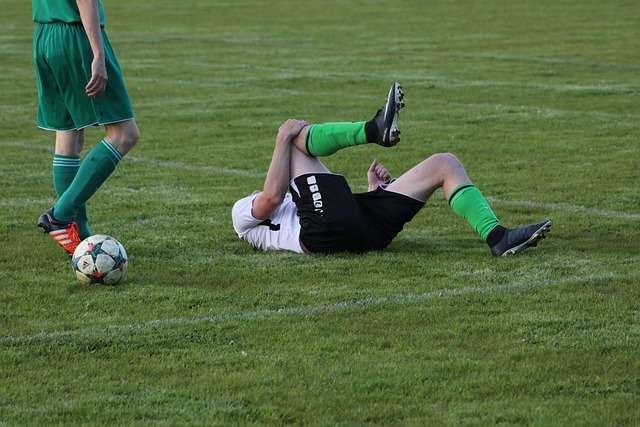
Prevention Strategies for Sports Injuries
It’s often said that an ounce of prevention is worth a pound of cure, and nowhere is this truer than in the world of sports. Preventing sports injuries involves a multifaceted approach that includes proper technique, appropriate, protective equipment, and a solid training and conditioning regimen. By taking the right steps, athletes can significantly improve safety, reduce the risk of injury, and enjoy their chosen sport with confidence and security.
One effective framework for injury prevention is StaRRt, which evaluates tissue health, anticipated tissue stress, and risk tolerance to determine an athlete’s readiness to return to their sport. This approach ensures ongoing injury prevention and helps athletes and their support teams make informed decisions about training and competition.
Preventing sports injuries is not just about avoiding pain and setbacks; it’s about fostering a sustainable, healthy relationship with physical activity. To prevent sports injuries, it’s essential to follow proper guidelines and techniques.
Proper Technique and Posture
The foundation of injury prevention lies in the mastery of proper technique and posture. Whether swinging a golf club, executing a gymnastics routine, or lifting weights, the alignment of the spine and limbs is critical. Good posture not only reduces unnecessary strain on muscles and joints but also enhances balance, coordination, and overall efficiency in movement.
Athletes who pay attention to their form and posture can experience improved energy transfer during movement, resulting in better agility and speed, and ultimately, superior performance. Instructors and coaches play a pivotal role in teaching and reinforcing these principles, ensuring that athletes of all levels move in ways that protect their bodies from injury.
Appropriate Equipment and Protective Gear
When it comes to preventing injuries, the role of proper equipment and protective gear cannot be overstated. From helmets that safeguard against head injuries to mouth guards that protect teeth and jaws during contact sports, the right gear is an athlete’s best line of defense. Studies have shown that proper gear and mouthguards can prevent a wide range of injuries, including:
- Head injuries
- Eye injuries
- Facial injuries
- Dental injuries
- Joint injuries
- Muscle injuries
Investing in and using the appropriate gear for your sport or activity is essential for staying safe and minimizing the risk of injury.
Moreover, the use of safety equipment can significantly reduce the likelihood of sustaining strains, sprains, and fractures. Young athletes themselves, parents, and coaches must prioritize safety equipment, ensuring it fits properly and is appropriate for the sport at hand. This dedication to safety not only protects athletes but also promotes a culture of injury prevention within the sporting community.
Some examples of safety equipment that can be used include:
- Safety pads and guards
- Helmets
- Protective eyewear
- Mouthguards
- Knee and elbow pads
- Shin guards
By using the appropriate safety equipment, athletes can enjoy their sport while minimizing the risk of serious injury themselves.
Training and Conditioning
A well-rounded fitness plan should be at the core of every athlete’s routine, encompassing strength training, cardiovascular exercise, and flexibility work. Strength training, in particular, is instrumental in building muscles that can better support and stabilize the body, shielding it from the stresses of physical activity. But it’s not just about bulking up; it’s about creating a balanced body that’s equally strong and flexible.
Key to this balance are proper warm-up and cool-down routines, which prepare the body for strenuous activity and facilitate recovery afterward. Additionally, practices like Pilates can significantly enhance core strength, which is vital for maintaining stability and preventing injuries. By incorporating a variety of exercises stretching practices, and routines into their training, athletes can build a body that is not only capable of performing at its peak but also resilient against injury.
First Aid and Home Treatment for Minor Injuries
When faced with a minor sports injury, the immediate response can make all the difference in the speed and effectiveness of recovery. First aid and home treatment play a crucial role in managing these injuries, preventing further damage, and initiating the healing process. The cornerstone of this early intervention is the RICE method, complemented by over-the-counter medications and knowing when to seek medical attention.
Often, minor injuries can be managed effectively at home, allowing athletes to return to their activities with minimal downtime. However, it’s important to listen to your body and err on the side of caution, as what seems minor at first can sometimes escalate if not treated properly. Let’s delve deeper into these first response strategies.
RICE Method
The RICE method is a tried-and-true first-aid strategy that stands for:
- Rest
- Ice
- Compression
- Elevation
It’s a simple yet powerful way to address minor injuries soon after they occur. Resting the injured joint or area prevents further damage, while icing helps to reduce swelling and pain. Compression with an elastic bandage can further decrease swelling, and elevation above the heart level assists in reducing blood flow to the injured area.
This method has been a staple in sports medicine for years because of its effectiveness in minimizing swelling and preventing additional bruising after an injury. By employing the RICE method as soon as possible post-injury, athletes can set the stage for a smoother and more rapid recovery.
Over-the-Counter Medications
In conjunction with the RICE method, over-the-counter medications can be a valuable tool for managing pain and inflammation. Nonsteroidal anti-inflammatory drugs (NSAIDs) like ibuprofen and naproxen are particularly effective in reducing both pain and swelling, while analgesics like acetaminophen are effective in reducing pain but do not have anti-inflammatory properties.
It’s important to use these medications as directed and to be aware of any potential side effects. In cases where pain persists despite these interventions, it may be a sign that the injury requires more than just home treatment, underscoring the importance of seeking medical care when necessary.
When to Seek Medical Attention
While many minor injuries can be treated at home, there are certain scenarios when medical attention from a healthcare provider is essential, especially in cases of serious injury. It’s time to consult a healthcare provider if you experience:
- Severe pain
- Significant swelling
- Bruising
- Pain and swelling that persist after a few days
- Inability to bear weight on the area
- Presence of an obvious deformity
Additionally, an inability to bear weight on the area or the presence of an obvious deformity are clear indicators that professional evaluation is needed.
Ignoring these symptoms can lead to more serious complications, making it crucial to be proactive in seeking medical care. Remember, the goal is not only to get back to your sport but to do so safely and effectively, ensuring your long-term health and performance.
Rehabilitation and Recovery
Recovering from a sports injury is a journey that involves multiple stages, each designed to bring you closer to your pre-injury level of activity. The process typically includes the following stages:
- Controlling pain and swelling
- Improving range of motion
- Increasing strength
- Training for proprioception and balance
- Gradual return to full activity
Each step is carefully monitored to prevent re-injury, taking into account any previous injury.
The importance of a carefully planned rehabilitation program cannot be overstated, as it ensures that every aspect of recovery is addressed, from flexibility to strength to sport-specific skills. Let’s examine some of the key elements of rehabilitation and the role they play in getting athletes back in the game.
Physical Therapy
Physical therapy is a cornerstone of rehabilitation, offering a range of exercises and treatments tailored to each athlete’s specific needs. From manual stretching by a therapist to foam roller exercises, the goal is to regain lost flexibility and soothe tight tissues. Resistance training, whether using bands or weights, plays a critical role in rebuilding strength and ensuring a robust recovery.
Proprioceptive exercises, often performed on equipment like a balance board, help athletes reestablish a sense of joint position and stability, which is crucial for preventing future injuries. Through a combination of these techniques, physical therapy helps pave the way for a successful return to sports.
Gradual Return to Activity
A gradual return to activity is paramount for athletes recovering from an injury. It’s not simply a matter of feeling ready; it involves demonstrating that the injury has physiologically healed, that pain is minimal, and that both range of motion and strength are maintained. The transition back into sports should be viewed as part of a continuum that encompasses the entire recovery and rehabilitation process rather than an isolated event.
Sport-specific training and advanced rehabilitation exercises, including plyometric drills, are critical to ensuring the athlete is adequately prepared for the demands they will face upon their return. The decision to return to play should be made collaboratively, involving input from the medical team, therapists, coaches, and the athlete’s support network, following guidelines like the StaRRT framework to assess health and activity risks.
Ongoing Injury Prevention
The end of rehabilitation doesn’t mean the end of injury prevention efforts. On the contrary, ongoing exercises from the rehabilitation program are essential for maintaining the strength and flexibility achieved during recovery. Exercises tailored to the acute, healing, and final stages of recovery should be seamlessly integrated into an athlete’s regular training routine to help prevent future injuries.
Continuing with specific exercises like:
- lunges
- resistance band workouts
- scapular squeezes
- wall push-ups
- stretching exercises
can provide ongoing protection and support for both the lower and upper body. By incorporating these exercises into their regular training, athletes can help ensure that their bodies remain resilient against the stresses of their sports.
Expert Advice from Dr. Kevin Plancher
Dr. Kevin Plancher, with his extensive expertise in orthopaedics and sports medicine, offers invaluable advice for athletes facing sports injuries. Recognized as a Top Doctor from 2021 to 2024, Dr. Plancher is a leading figure in the field and a trusted voice for athletes seeking to understand more about their condition and the treatment options available to them. His insights are grounded in years of experience and a commitment to helping athletes make informed decisions about their recovery and health.
Through his work, Dr. Plancher emphasizes the importance of early intervention and the critical role orthopaedic surgeons play in sports medicine. He is dedicated to advancing the field through educational platforms, such as a sports medicine fellowship program and a national conference, and by promoting physical well-being through his non-profit foundation, ‘The Orthopaedic Foundation for Active Lifestyles’.
Let’s explore some of the key points that Dr. Plancher has shared regarding the treatment and management of sports injuries.
Importance of Early Intervention
Early intervention is the key to preventing a sports injury from becoming a long-term problem. Treating an injury promptly can:
- Prevent conditions from worsening
- Save the athlete from developing chronic issues
- Facilitate a faster and more effective recovery
- Reduce the potential for further damage
Immediate, appropriate care is crucial in achieving these outcomes.
Ignoring the initial signs of discomfort or pain can lead to more severe injuries and a longer recovery time, possibly requiring more complex and invasive treatments. Dr. Plancher stresses that early intervention strategies, such as rest, ice, and proper medical evaluation, can assist athletes in returning to their sport more quickly and safely.
Role of Orthopaedic Surgeons in Sports Medicine
Orthopaedic surgeons like Dr. Kevin Plancher are pivotal in the comprehensive management of sports injuries. With certifications in Surgery of the Hand and Orthopaedic Sports Medicine, Dr. Plancher is adept at addressing injuries from diagnosis to treatment, ensuring athletes receive the care they need for a full recovery. Orthopaedic surgeons treat a wide array of conditions, from bone tumors and carpal tunnel syndrome to broken bones and joint pain, often involving surgical interventions such as hip replacements, ACL reconstruction, and rotator cuff repair.
The benefits of orthopaedic treatments for athletes include reduced pain, restore joint function, and, when necessary, surgical solutions that can provide long-term relief and a return to peak performance. Dr. Plancher’s work at Plancher Orthopaedics & Sports Medicine, serving areas such as Greenwich, CT, and Manhattan, NY, embodies his commitment to providing acute emergency treatment and expert care for sports-related injuries.
Summary
As we’ve journeyed through the complex terrain of sports injuries, from understanding to prevention, treatment, and recovery, it’s clear that knowledge is power. Armed with the insights shared in this guide, athletes can approach their sports with the confidence that comes from knowing how to prevent injuries, how to respond when they occur, and how to navigate the path to recovery. The expert advice from Dr. Kevin Plancher further reinforces the importance of informed decision-making and early intervention for the best possible outcomes.
Let this guide serve as your playbook for managing sports injuries, a resource to return to whenever you or someone you know is faced with an injury setback. Remember that with the right approach, a sports injury doesn’t have to be the end of your athletic journey—it can be a challenge that, when overcome, makes you a stronger and more resilient athlete. Contact Plancher Orthopaedics today to learn more about treating sports injuries!
Frequently Asked Questions
What are examples of injury prevention?
Injury prevention strategies can include maintaining flexibility through dynamic stretches, strengthening the core, using proper technique, resting, and ensuring proper healing of previous injuries. Additionally, effective injury prevention examples can involve implementing laws and programs such as national highway speed limits, helmet laws, child passenger restraints, window guards, smoke detectors, and violence/penetrating injury programs.
Who prevents and treats athletic injuries?
Athletic trainers are specialists who can prevent, diagnose, and treat athletic injuries, while also developing and implementing rehabilitation programs for injured athletes. Physiatrists and pain management specialists can also be involved in the nonsurgical management and rehabilitation of musculoskeletal conditions.
What is the most effective treatment for sports injuries?
The most effective treatment for sports injuries is the R-I-C-E method, which includes rest, ice, compression, and elevation. This approach helps relieve pain, and inflammation and promotes faster healing.
What are the most common sports injuries?
The most common sports injuries are ligament sprains, muscle strains, bone fractures, dislocations, tendonitis, and stress fractures. It’s important to be aware of these risks and take precautions to avoid them.
How can proper technique and posture prevent sports injuries?
Proper technique and posture align the spine and limbs, reducing strain on joints and muscles and improving athletic performance. These practices can help prevent sports injuries.

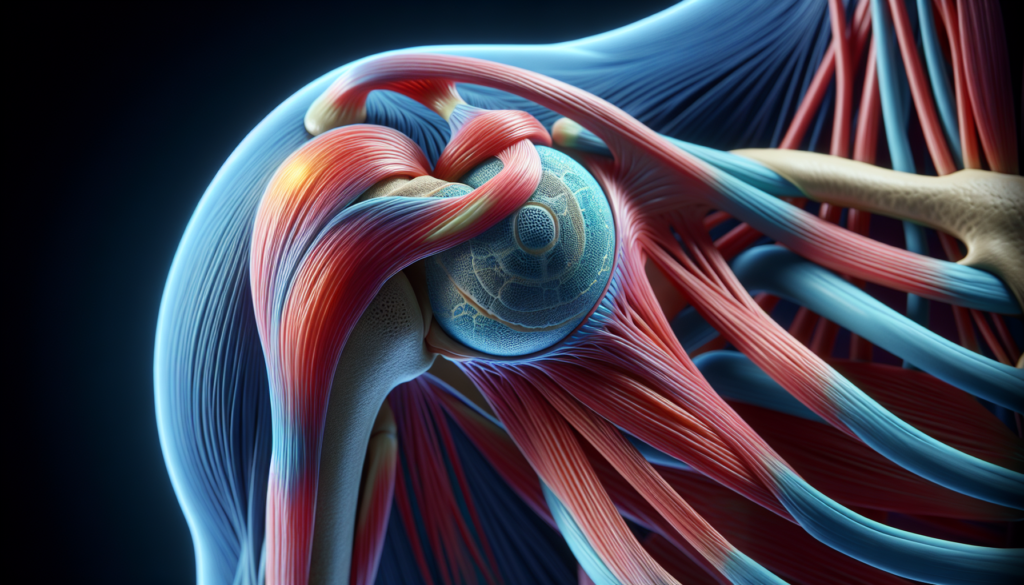
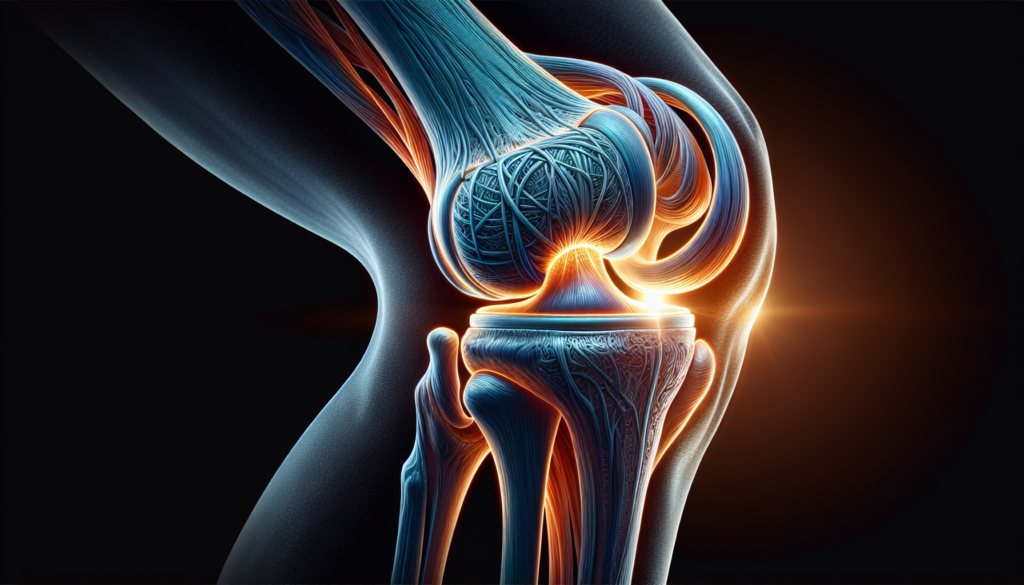
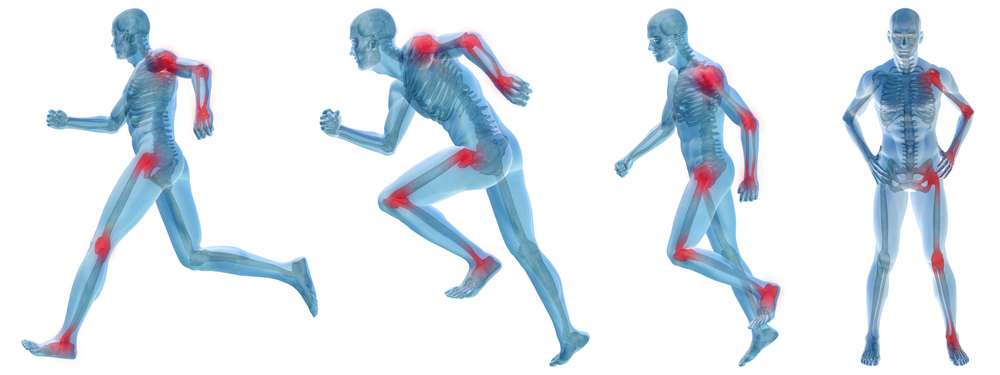
 William D. Murrell, MD
William D. Murrell, MD Thomas B. Evely, DO
Thomas B. Evely, DO Clifford Voigt, MD
Clifford Voigt, MD Karthikeyan Chinnakkannu, MD
Karthikeyan Chinnakkannu, MD Max N. Seiter, MD
Max N. Seiter, MD Demetris Delos, MD
Demetris Delos, MD Lauren M. Fabian, MD
Lauren M. Fabian, MD